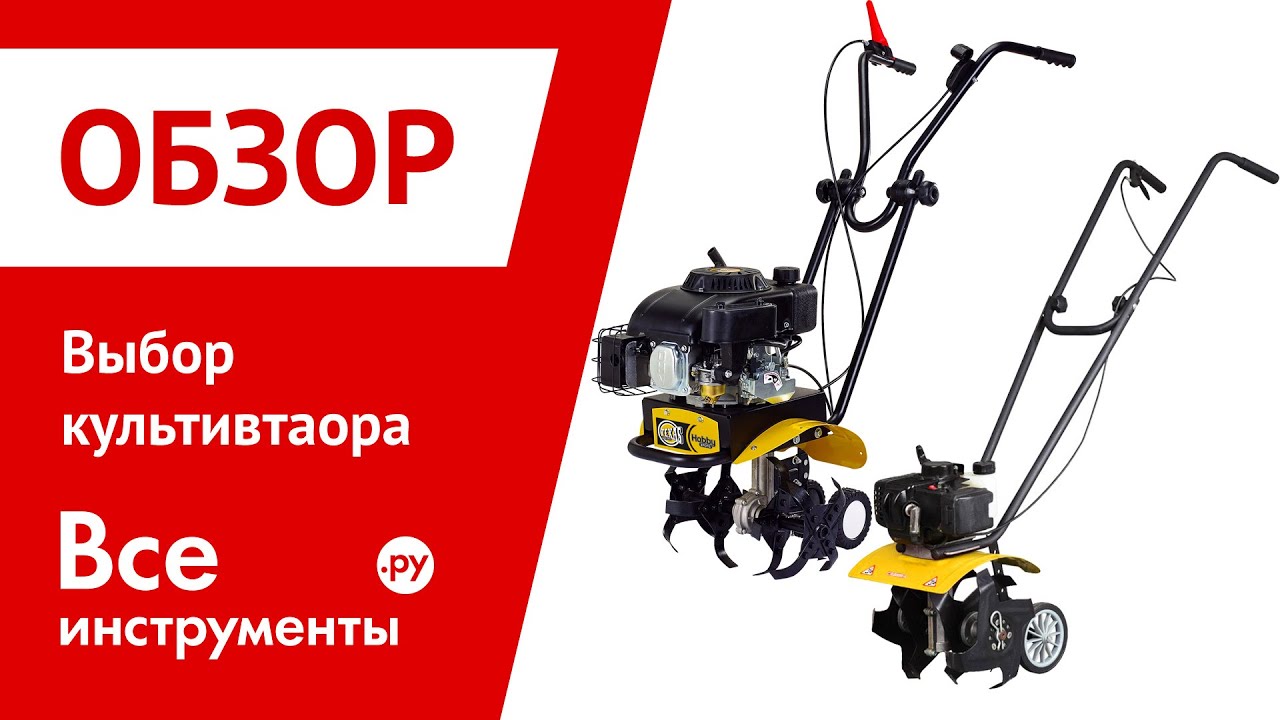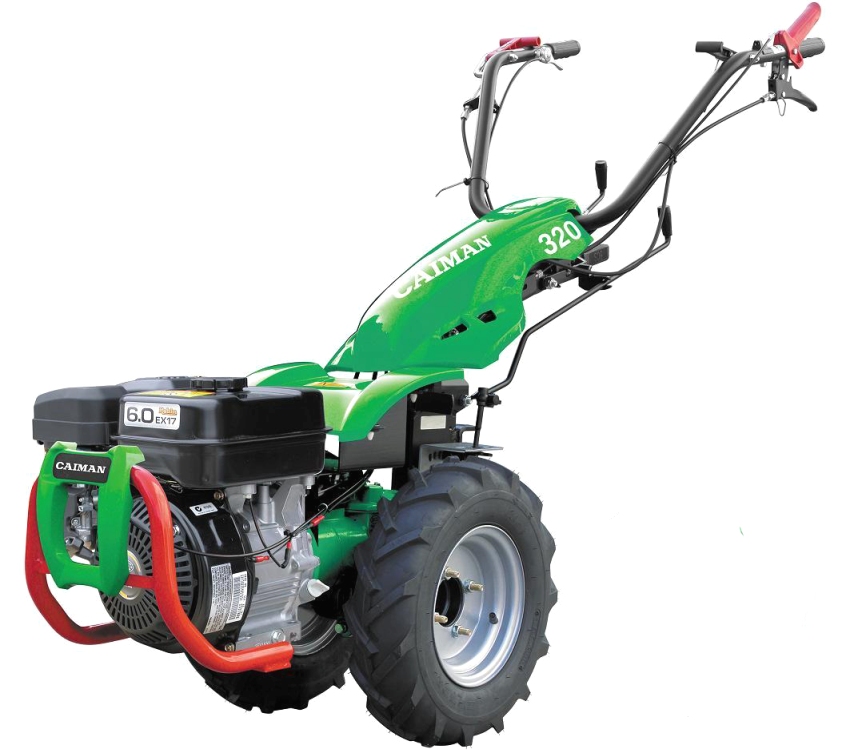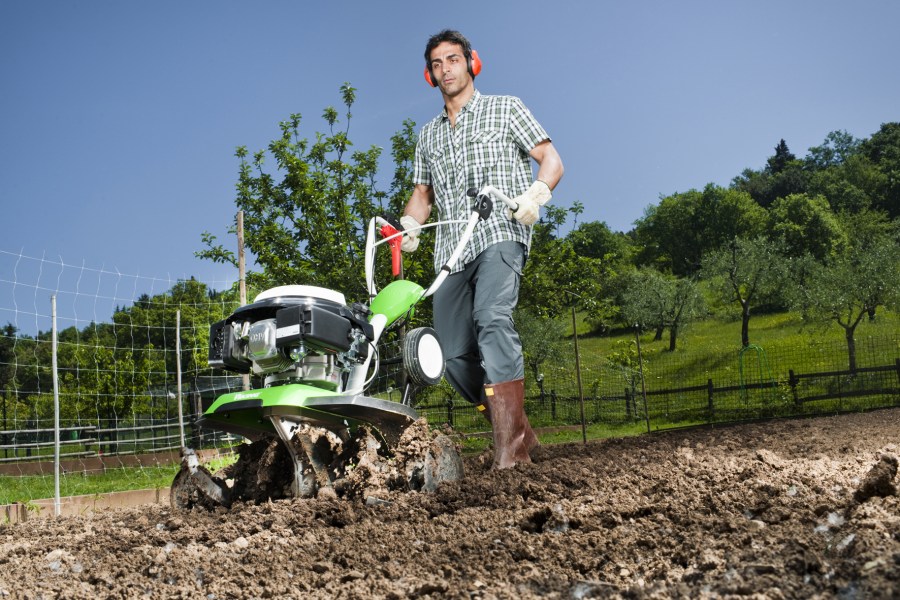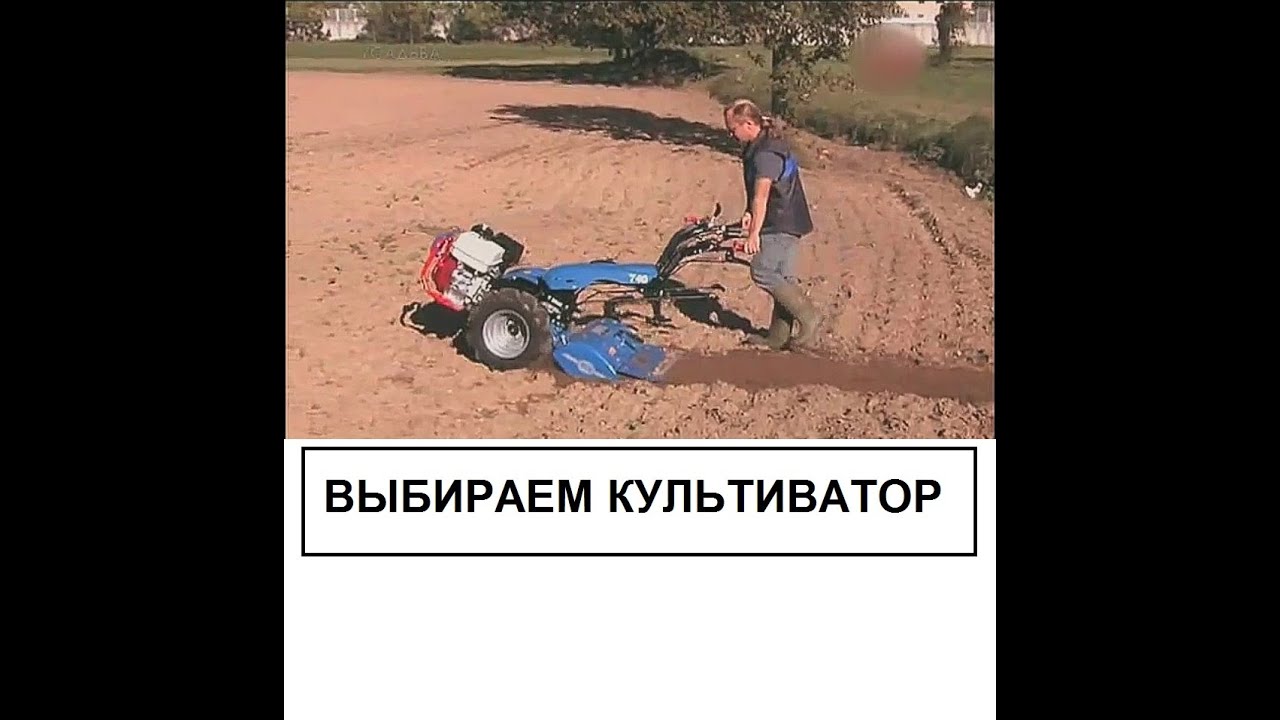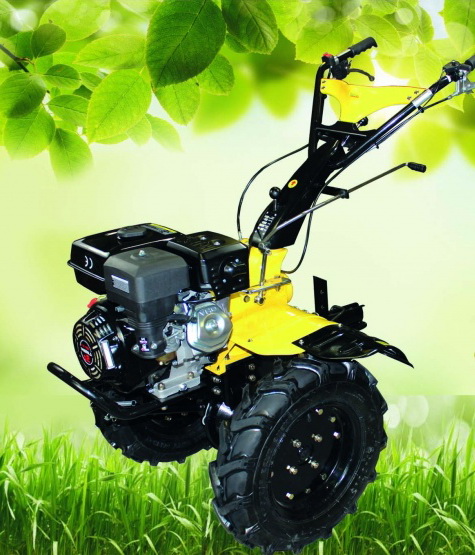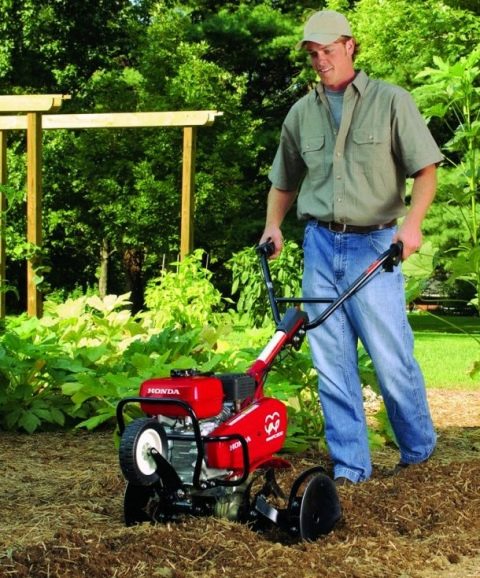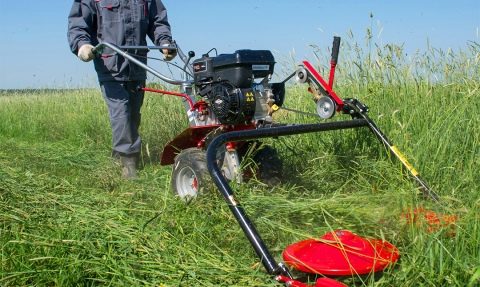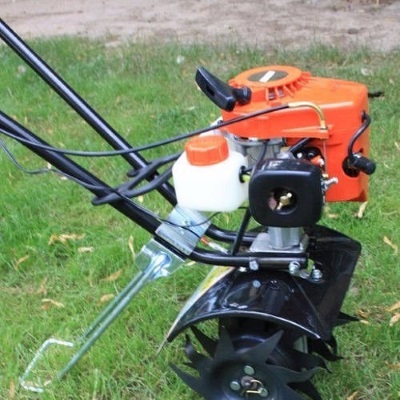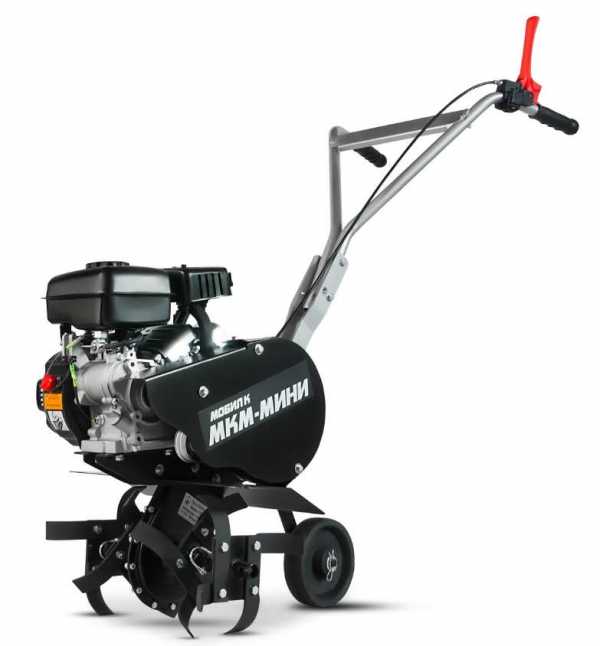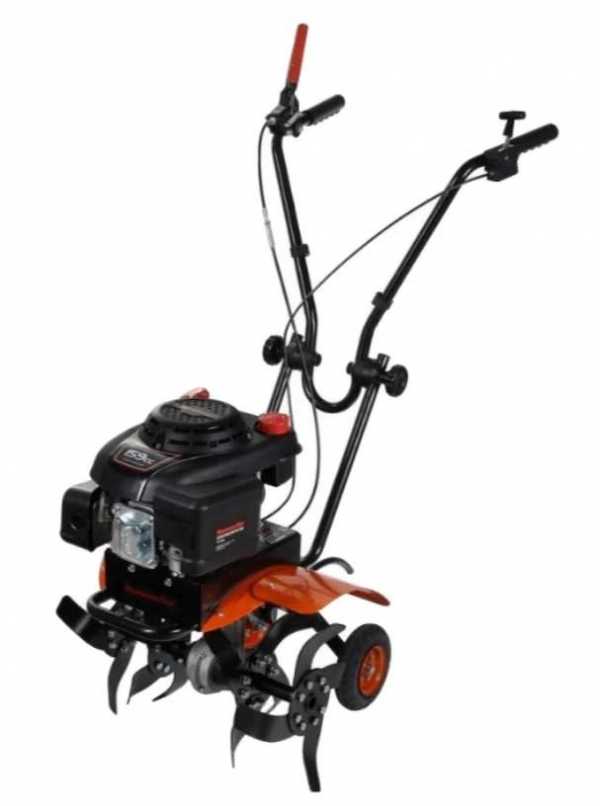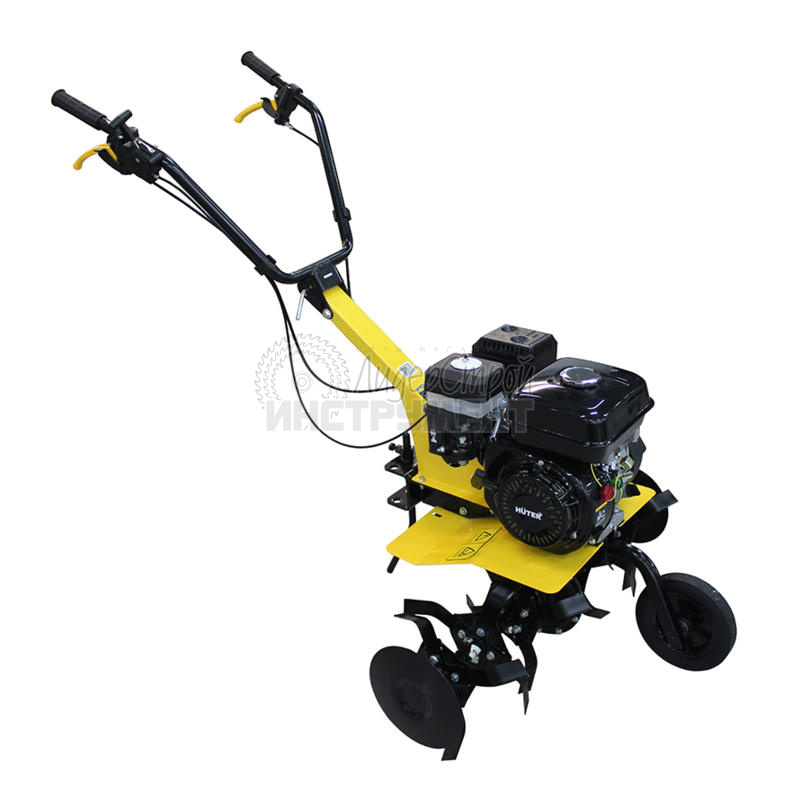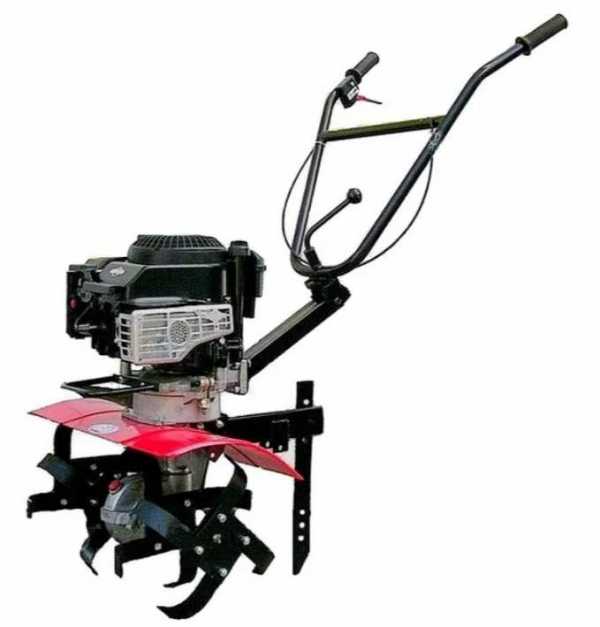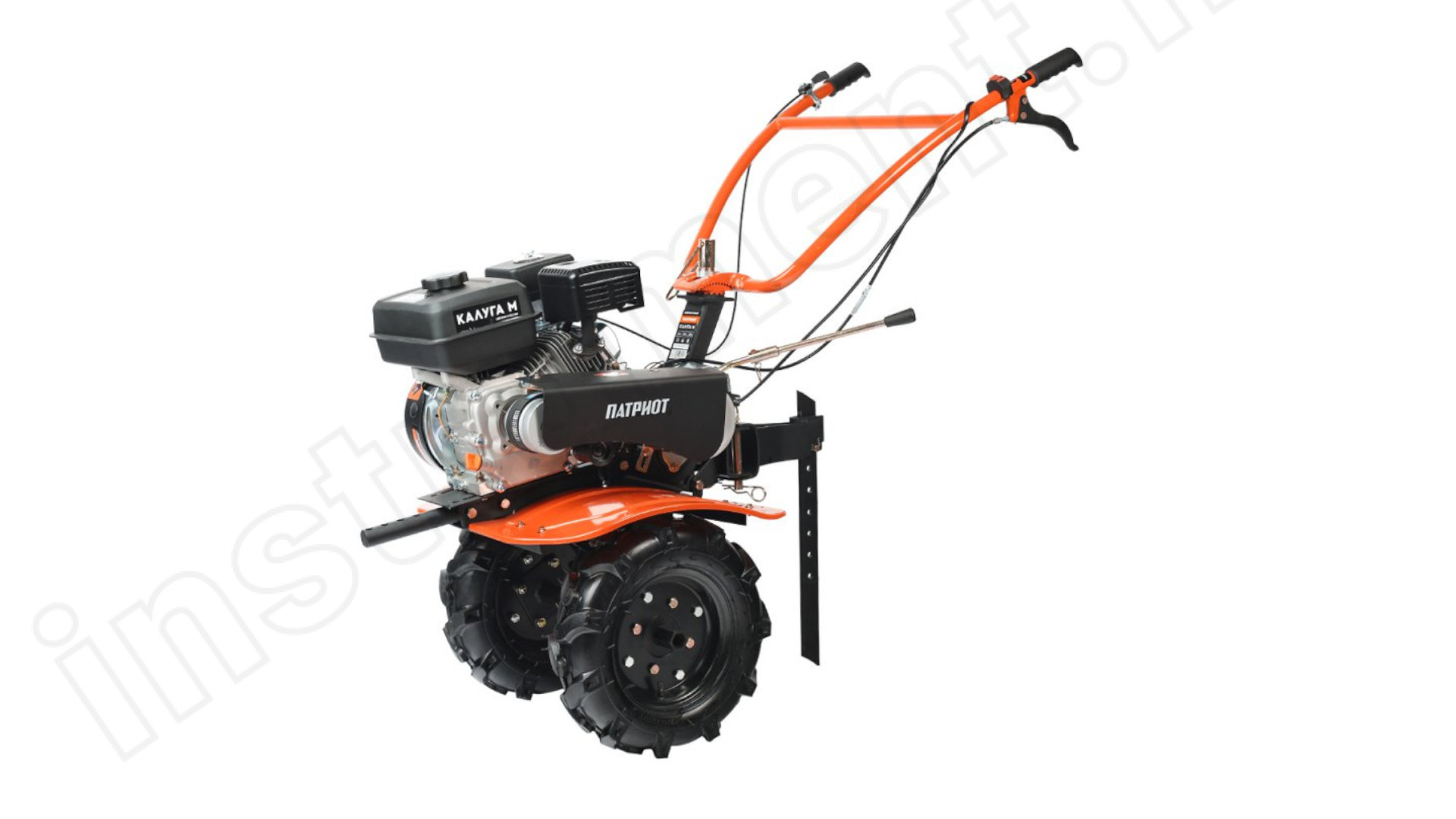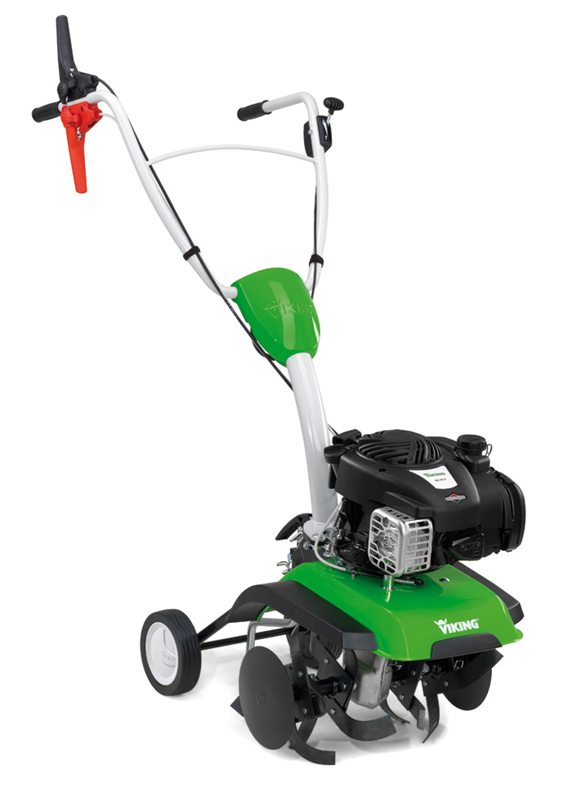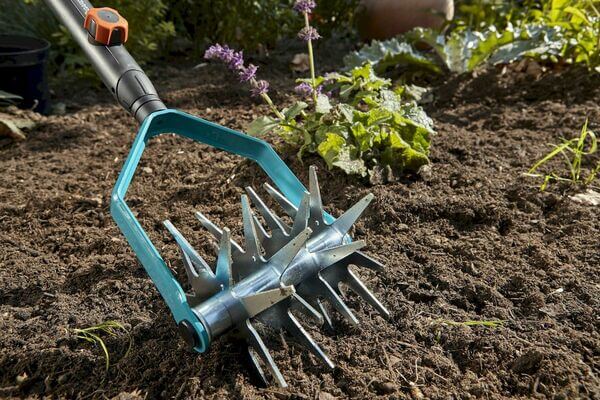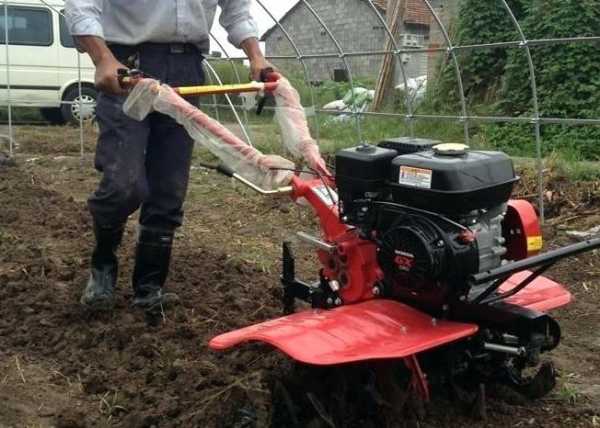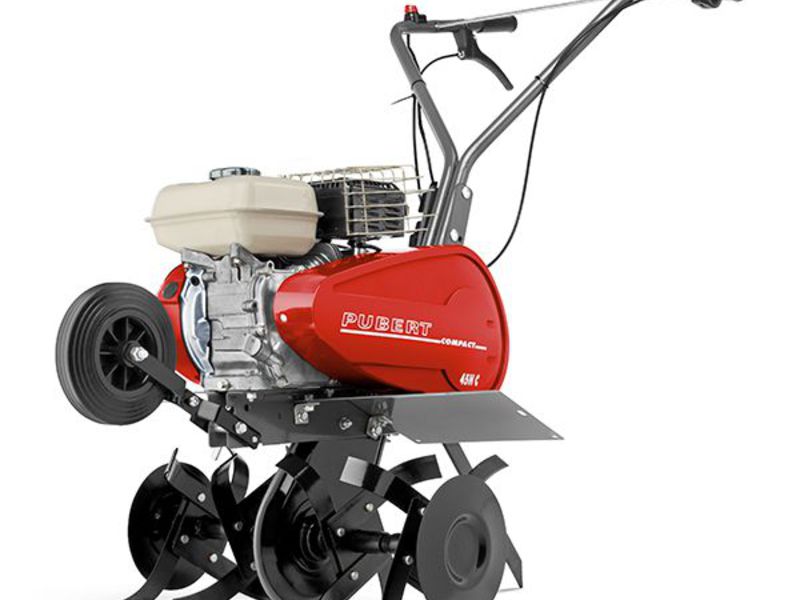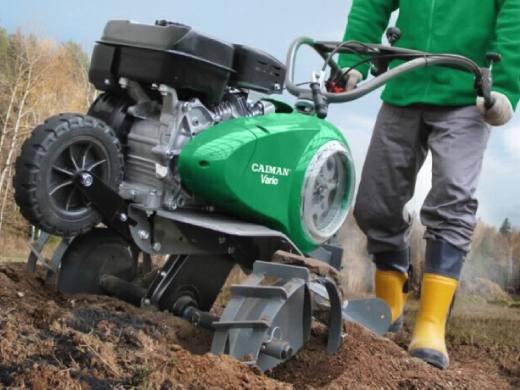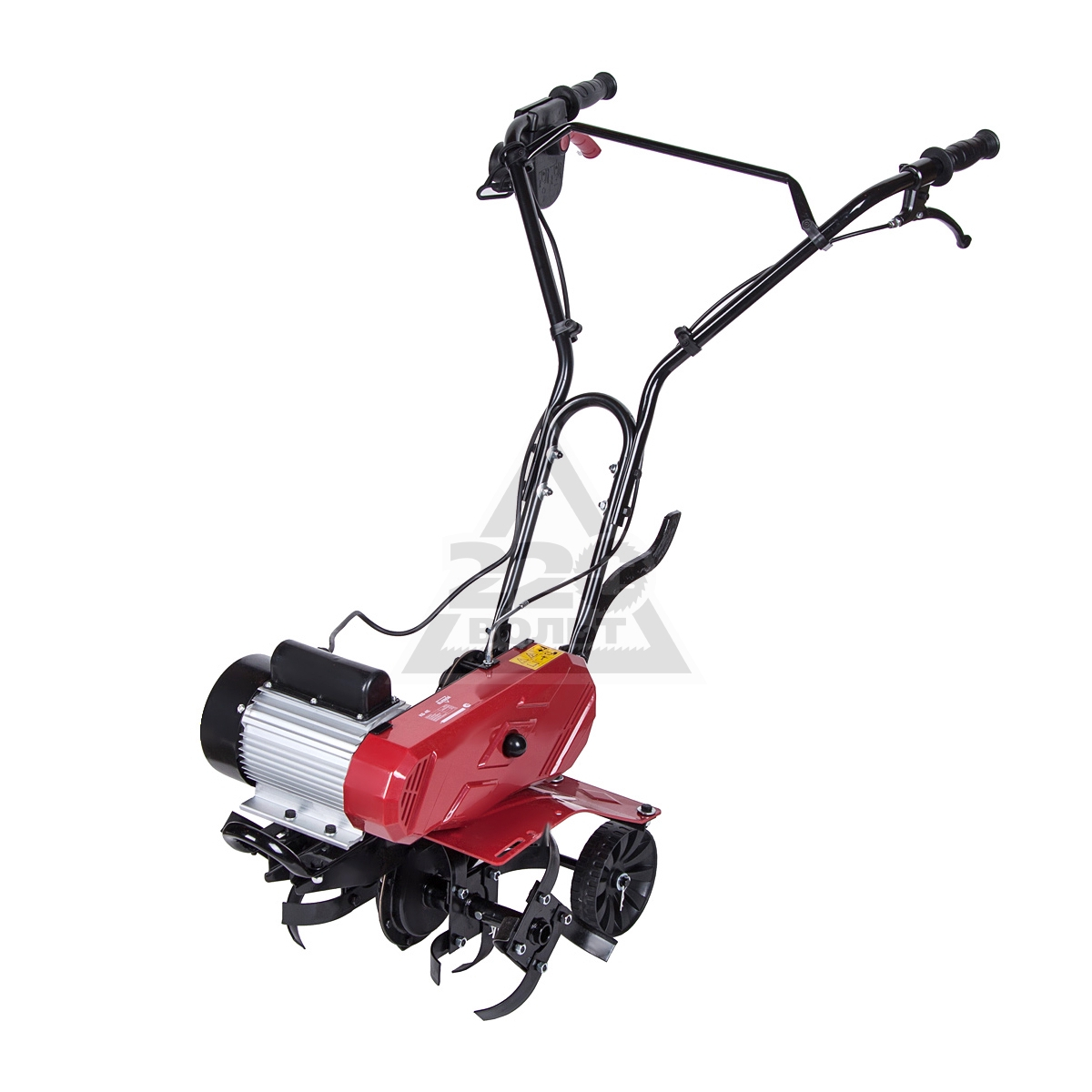How to choose an electric cultivator
To understand which electric cultivator is better, it is worthwhile to understand the technical characteristics and consider how they affect the consumer qualities of the unit. First of all, when choosing, the service area is taken into account. Also important are the hardness of the soil, the types of work that the unit must perform.
Let's take a look at how to choose the right electric cultivator.
The units are divided into 2 power categories: light and medium. For the cultivation of heavy virgin lands of a large area, it is better to buy powerful gasoline walk-behind tractors.
Models belonging to the light class have an engine power in the range of 750-1500 watts. They are maneuverable, weigh a little (7.5-15 kg). The width of the strip processed per pass is 20–35 cm. The devices can vibrate and jump on heavy soils with clods of dirt. A depth of up to 20 cm is dug on loose, pre-treated soil.
Light models for the most part are not supplemented with attachments. Their plus is the ability to work in small areas, in closed greenhouses, to process strips along the fence or in other narrow places. Most of them have a worm (gear-screw) transmission. The plowing area is up to 10 acres.
Models of cultivators of medium power are equipped with a more durable frame, cutters made of high quality metal. The power of the units ranges from 2000 to 2500 watts. With such a device, you can process plots of up to 15 acres. These are reliable and durable devices. If the land is dug up every year, then the electric cultivator will easily process it without prior plowing.
On such models it is possible to install additional equipment, expanding the functionality of the device. A chain drive is installed in them, which increases the strength. But such a model will cost more than light options. Hyundai T2000E, Daewoo DAT 2500E in this category have good performance.
When buying, pay attention to whether it is possible to adjust the width of the processed strip. For small models, it can be in the range of 20-25 cm, and in more powerful ones - up to 50 cm
If the beds on the site are small, then a cultivator with a narrow cutter is sufficient. There are models with collapsible accessories, on which you can adjust the width of the passage.
In electric cultivators, cutters are installed in the shape of a saber. It has shown itself well in operation - it is easily sharpened, it loosens the ground with high quality.
When buying, you need to pay attention to the material from which the cutter is made. Cheap ones are made of soft metal, so they quickly fail.
Hardened steel is the best option.
The depth of digging is also important. Light models penetrate into the ground by 8-10 cm, which is enough for the beds, and more powerful units plow 20-25 cm, they can replace a motor plow. The seeding depth can be adjusted with the coulter.
Electric cultivators are available in two transmission options - worm and chain. The first is installed on light models with low power, such options are budgetary. The chain drive has a long service life and more power, but the price is higher.
Pay attention to the brand. The best manufacturers, who have been on the market for a long time, produce equipment that serves for years without breakdowns.
Recommend DDE, Daewoo, CHAMPION, PATRIOT, Greeworks.
When buying an electric cultivator, in addition to the characteristics, you need to pay attention to the convenience of the model, which is provided by additional functionality and capabilities:
- Handle Adjustment - This feature allows you to adjust the parameters of the device to your height, making it easier to work. If the steering wheel can be turned, the machine does not have to be lifted when cornering.
- The foldable handle saves space during storage and transportation.
- The cover of the handle protects the hands from slipping, facilitates the work.
- The wheels make it easy to transport the unit.
Other possible options add comfort, but you need to remember - the more of them, the higher the price of the unit, and sometimes not all of them are used
It is important to choose only what will be useful for you during your work, so as not to overpay for unnecessary functions.
What to choose?
You should choose a walk-behind tractor or cultivator after a careful study of your site and operating conditions.
You need to rely on the following criteria:
- soil quality. It is better to entrust the heavy, dry, clayey, stale, virgin soil to the walk-behind tractor. Light soil with an airy texture can be given to the cultivator;
- the size of the plot. Up to 10 acres, in greenhouses and hotbeds there is no need for a walk-behind tractor. Large dachas will already need it;
- necessary functions. If you need cleaning, deep plowing, transportation of goods, mowing grass, a simple cultivator is out of the question;
- complexion, abilities and age of the user. Elderly, physically unprepared people, adolescents will find it difficult to service a heavy walk-behind tractor. Also, it will not be easy with him in the case of communication with the technique "for you". The cultivator is as accessible as possible for this parameter;
- the frequency of use and the availability of storage space. There is hardly any reason to purchase an expensive bulky walk-behind tractor if the dacha is very cramped, without additional buildings and is visited a couple of times a year;
- availability of spare parts for sale. Before buying, it is better to study how realistic it is to buy consumables and carry out repairs in a specific region. Maintenance difficulties often render the most sophisticated technique completely useless.
What would you choose?
MotoblockCultivator
Summing up, we can say that a walk-behind tractor is much more relevant for a medium or large rural area, commercial farming, a large family farm, with permanent residence in a private territory. A modest cottage with several beds rarely requires high efficiency, which means that a cultivator with the required power is enough.
It may not be profitable for tens and hundreds of hundred square meters with rare processing to acquire equipment at all. One-time plowing of the field will be cheaper if you hire a tractor, for example.
In general, the choice depends on the personal preferences of each person, his financial capabilities and wishes.
- Which cultivator to choose: an overview of popular models of electric and gasoline cultivators from light to heavy, their characteristics, pros and cons
- Miracle shovel for the garden - we dig the ground in the country without effort: the principle and rules of operation of a manual cultivator based on
- Lawn scarifier: which is better - electric, gasoline or manual, rating of models, their pros and cons
- Lawn verticutter: review and popularity rating of the best gasoline and electric models

